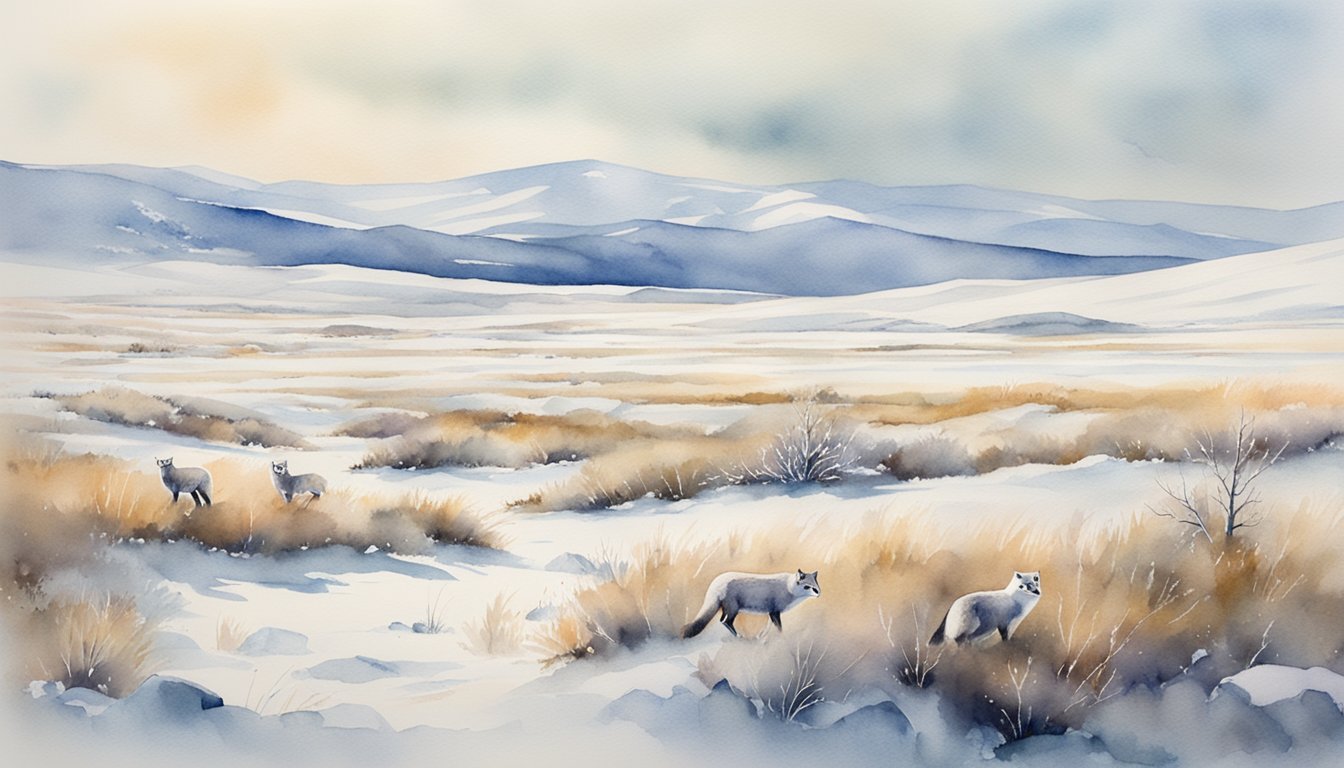Tundra Wildlife and Adaptations
Tundra biomes are harsh environments where only the hardiest wildlife can thrive. Animals of the tundra have developed remarkable adaptations that enable them to withstand extreme cold and dramatic seasonal variations.
Mammals of the Tundra
The tundra is home to several resilient mammals. Among them, the Arctic fox boasts a thick fur that changes color — white in winter to blend in with the snow, and a darker coat in summer to absorb heat. Its small ears minimize heat loss. Larger species like polar bears and musk oxen have developed thick layers of fat and fur for insulation against the brutal cold. The Arctic hare, lemmings, and the Arctic ground squirrel are some of the small mammals that adapt to their chilly habitats through behavioral tactics like burrowing into the snow to retain warmth.
Birds and Insects in Tundra Regions
Despite the tundra’s extreme conditions, it provides breeding grounds for various bird species. During the brief tundra summer, birds such as the snowy owl and ptarmigan exploit the abundant daylight and prey like lemmings. Insects are few, but those like mosquitoes manage to carry out their life cycles during the short summer months.
Unique Adaptations for Survival
Tundra animals must also combat predation and food scarcity. Camouflage plays a key role, as seen with the white fur of Arctic wolves during winter or the changing plumage of the ptarmigan. To escape harsh winter conditions, some species, like the marmots, enter hibernation, while others, including many bird species, opt for seasonal migration. Fish beneath the ice have evolved antifreeze proteins to survive in freezing waters. Such unique traits underscore the complexity and resilience of tundra wildlife.
Tundra Habitats and Conservation

The tundra is a vast, treeless landscape that dominates the polar regions and high mountains, characterized by permafrost and a short growing season. This section examines the biodiversity and the challenges faced by this biome, as well as the actions taken to preserve it.
Plant Life and Flora Diversity
The tundra may seem barren, but it boasts a remarkable variety of plant life specially adapted to its cold environment. The flora includes hardy grasses, mosses, and lichen which can tolerate the icy conditions and poor, shallow soil. In the Arctic tundra, perennials like the dwarf shrubs have developed growth forms that keep them low to the ground, providing protection from the severe winds. The alpine tundra, located in high altitude areas such as Alaska and Canada, has a similar spectrum of vegetation, including tufted grasses and cushion plants that insulate the ground and preserve soil warmth.
Geographical Distribution and Climate
Tundra regions are predominantly found encircling the North Pole, extending through parts of Northern Russia, Greenland, and Canada. This biome is also present on mountain ranges across the globe where conditions are suitable. Its climate is characterized by very low temperatures, minimal precipitation, long winters, and short summers. Alpine tundra exists above the tree line on mountains, where it endures extreme conditions similar to the Arctic tundra, sans the permafrost, showcasing nature’s remarkable adaptability.
Environmental Threats and Protection Efforts
Despite its isolation, the tundra is threatened by climate change that alters permafrost patterns, potentially releasing stored greenhouse gases. Human activities such as oil and gas drilling further destabilize these fragile ecosystems. Conservation initiatives are crucial to mitigate these effects. Efforts include establishing protected areas to safeguard habitats and the animals that reside there, such as the snowshoe hare, whose thick coat of winter fur typifies the special adaptations of tundra fauna. In Antarctica, conservation endeavors focus on species like the iconic penguins, whose blubber is essential for insulation against the extreme cold.

